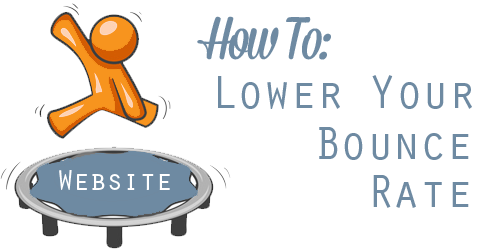Bounce rates of website often measured by tools such as Google Analytics is the percentage of people leaving a given page such as the website home page without viewing any other pages. Basically, a site visitor lands on the home page or another page of the website and leaves without any further action.
Generally, lower bounce rates are the goal for any type of website and business. Even though, all websites experience bounce rates and some of them can be very high. Often average bounce rates tend to be between 40-60%.
High bounce rate is not always a bad thing. It depends very much on the type of website and its purpose. Sometimes the single page that a visitor landed on served its purpose. The page provided the information it intended to do for example.
On the other hand, when bounce rates are high and not for reasons that are “good”, it is best to make adjustments to lower it. Here are 10 tactics to reduce website bounce rates.
1. Reduce page-loading time.
People online do not like to wait for websites to load. Pages that load slow increase bounce rates. The rule is usually that users wait two seconds before abandoning the idea.
2. Quality design matters.
Website visitors form opinions quickly within seconds of landing on a page. Poor website design can quickly cause a visitor to “bounce” out. Images and colors as well as layout speak a thousand words.
3. Use Responsive Design.
Websites that are not mobile-friendly at this point must upgrade right away. There should not be any websites in operation that are not mobile-friendly. Consumers and website visitors already visit websites on mobile devices by over 60%.
4. Avoid annoying ads and pop-ups.
Websites that annoy site visitors will certainly have much higher bounce rates. To reduce rates avoid annoying advertisement and pop-ups that are large and distracting.
5. Provide the information.
A site or page is often found due to the keywords and information provided. Websites that don’t follow through have high bounce rate. Provide the information stated the page is about in necessary detail.
6. Create internal linking.
Providing website visitors with relative links to other areas of the website increases likelihood visitors stay longer and visit other areas of the website, reducing bounce rate.
7. Use proper text formatting.
A large amount of text with poor formatting can quickly turn a visitor around and make them “bounce” out. Proper text formatting should be used with headers, paragraph breaks, and so on. It must be visually pleasing.
8. Easy navigation structure.
Confusing website navigation drastically looses site visitors and increases bounce rates. Websites that want to lower bounce rate must have easy navigation structures clearly visible.
9. Recommend additional content.
Giving people additional content options that relate is a great tactic to decrease bounce rates. Websites can recommend other pages, articles, products, and content that the visitor may be interested in.
10. Colors are critical.
Colors convey emotions and the use of wrong colors can quickly make a site visitor leave. It is part of using professional website design to achieve pleasing and attractive color usage.








